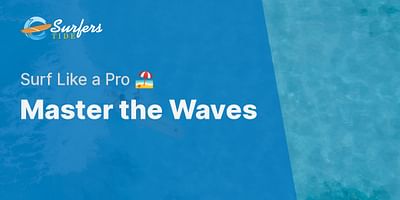Kai Summers is a professional surfer and world traveler with over 15 years of experience riding the waves. Born and raised in Hawaii, Kai has dedicated his life to exploring the best surf spots around the globe and sharing his knowledge with fellow enthusiasts.
Hey there, fellow wave rider! So, you're ready to take on the challenge of learning to surf on a short board? That's awesome! Short boards are known for their maneuverability and speed, making them a popular choice among experienced surfers. But fear not, my friend, because I've got some tips to help you get started on your short board journey.
First things first, let's talk about the right board for you. When choosing a short board as a beginner, it's crucial to find one that suits your skill level. Look for a board with a bit more volume and width to provide stability and make paddling easier. This will help you catch more waves and gain confidence in your abilities.
Now, let's dive into some tips to help you master the art of short board surfing:
1. Paddle with purpose: Short boards require more effort to paddle compared to longboards. Focus on building your upper body strength and practice paddling with power and efficiency. Remember to keep your chest up and your head looking forward to maintain balance.
2. Master the pop-up: The pop-up is the key to getting from lying on your board to standing up. Practice this move on land before hitting the waves. Start by lying flat on your stomach, place your hands near your shoulders, and quickly push yourself up into a standing position. This will help you develop the muscle memory needed for a smooth pop-up in the water.
3. Find the sweet spot: When you're ready to catch a wave, position yourself on the board with your chest centered over the sweet spot. This is the area where the board is most buoyant and stable. Finding the sweet spot will help you maintain balance and control as you ride the wave.
4. Timing is everything: Short boards are designed for quick turns and maneuvers, so timing is crucial. Watch the waves and observe their patterns before paddling out. Look for the right moment to paddle hard and catch the wave just as it starts to break. This will give you the best chance of riding it all the way to shore.
5. Start small: As a beginner on a short board, it's important to start with smaller waves. Look for gentle, rolling waves that are waist-high or smaller. These waves will provide a more forgiving learning environment, allowing you to practice your balance and turns without feeling overwhelmed.
6. Stay low and centered: When riding a short board, it's important to stay low and centered on the board. Bend your knees slightly and keep your weight evenly distributed. This will help you maintain control and stability as you navigate the wave.
7. Practice, practice, practice: Learning to surf on a short board takes time and dedication. Don't get discouraged if you don't progress as quickly as you'd like. Keep practicing, stay positive, and celebrate every small victory along the way.
Now that you have some tips to get you started, it's time to hit the waves and embrace the thrill of short board surfing. Remember, learning to surf is all about having fun and enjoying the journey. So grab your board, paddle out, and let the waves carry you to new heights of stoke and excitement!
Happy surfing!
Kai Summers















